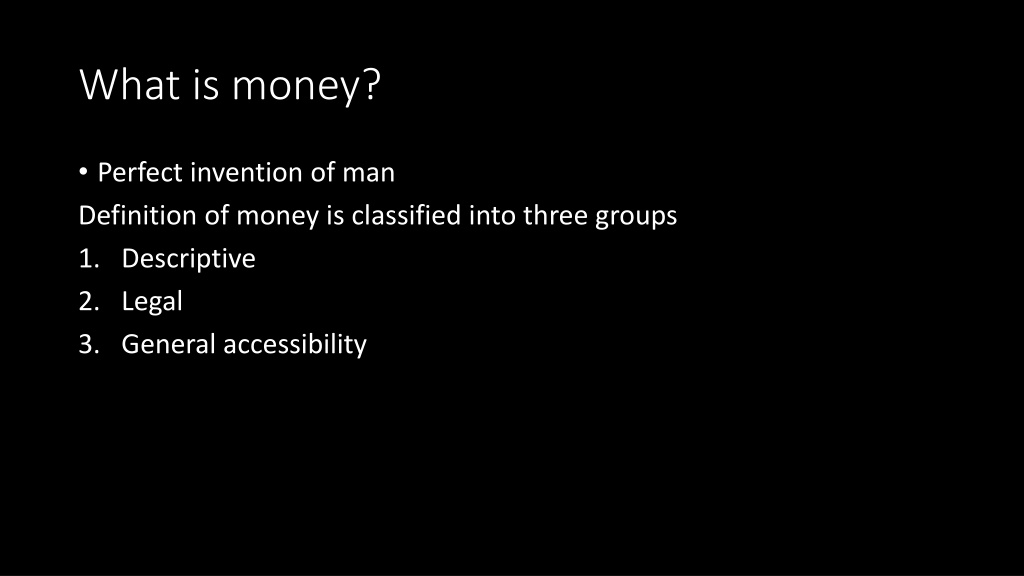Understanding the Concept of Money and Its Definition in Economics
Money serves as a universal medium of exchange, store of value, and unit of account. It is classified into descriptive, legal, and general accessibility definitions. Wealth and income are distinct from money, with wealth encompassing assets and income representing returns on wealth. Near money includes assets easily convertible to cash but not directly usable for purchases, influencing individuals' spending patterns.
Download Presentation

Please find below an Image/Link to download the presentation.
The content on the website is provided AS IS for your information and personal use only. It may not be sold, licensed, or shared on other websites without obtaining consent from the author. Download presentation by click this link. If you encounter any issues during the download, it is possible that the publisher has removed the file from their server.
E N D
Presentation Transcript
What is money? Perfect invention of man Definition of money is classified into three groups 1. Descriptive 2. Legal 3. General accessibility
Descriptive definition of money Money is anything that is generally acceptable as mean of exchange and act as store of value. Money is mean of valuation and payment. Money is anything that is widely used as a mean of payment and is generally acceptable in the settlement of debt.
Legal definition These definitions are based on state theory of money Knap: Anything that is declared by state as money is money. Hartley: Money should be legal tender. Its should be declared by the government of the country as mean of payment and people should be forced to accept it. The legal definition alone is not enough to define money and because the government can not force people to accept it. Example: Mark in 1923
General acceptability Anything that is generally accepted as a medium of exchange and as standard of value. Widely accepted in payment of goods and services Money is anything that is regularly used in economic transactions and serves as a medium of exchange , unit of account, and store of value.
Money is different from wealth and income Wealth includes all scare resources which are owned by individual, firm, and nation. It include physical goods and financial assets Example: land, machinery, property, shares, bonds etc. Characteristics of wealth are 1. It has utility 2. Consist of scare resources 3. Transferable Internal qualities of human being are not wealth it is personal capital
Income Income is return on wealth Stocks are wealth and earning on stock is income Income has time dimension
Money and Near Money Assets that can be easily and quickly converted to cash is near money. Near money can not be directly use for payment. Treasury bills, government securities, saving bonds, prize bond etc. The spending of people depends on the nature of money he has.























